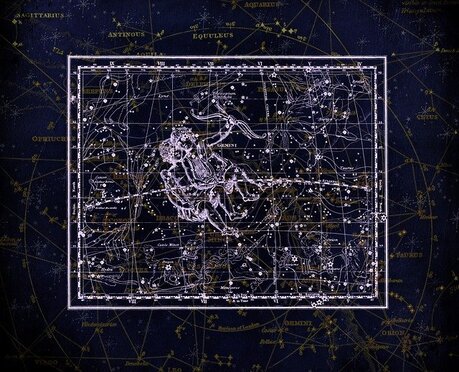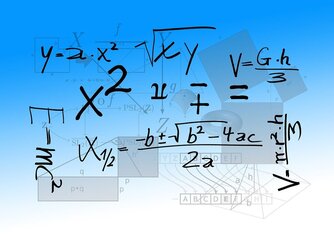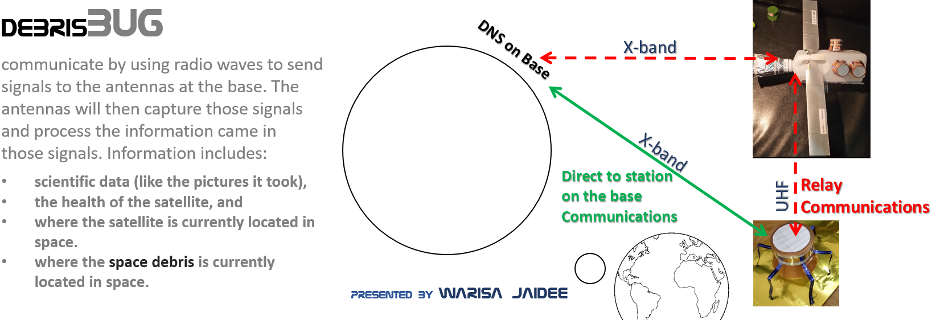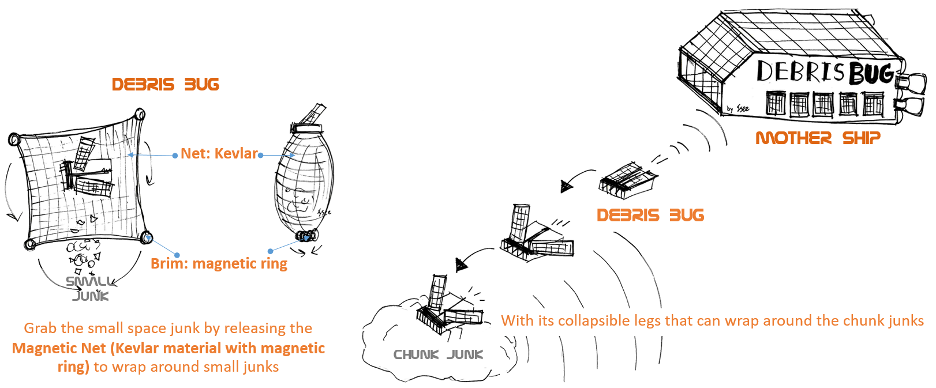Ruvimbo SamangaSpace Law & Policy Analyst  On the 2nd of October 2020, the Astro Zimba space education curriculum for young children began its programme, launching a pilot study with the Whitestone School, in Bulawayo, Zimbabwe. This space education curriculum recognises that building Zimbabwe’s space autonomy is hinged on the nation’s capacity to make a critical mass of skilled individuals. This capacity-building must necessarily begin from the early developmental stages. The Astro Zimba curriculum, created by myself and Marco Romero, in collaboration with InnovaSpace and Students for Exploration & Development of Space (Zimbabwe), is a series of lectures on space and space-related themes, using interactive sessions, games, videos, comic books and other learning activities to spark space science and technology curiosity amongst the youth. This is done in the hopes that more children, especially young girls, will be inspired to take up STEM subjects and careers. The founders of this programme identified a gap in existing curricula, one which they wish had been filled during their initial years, and one which they believe has a profound impact on the development of the space industry.  Space sciences and technology, while a rapidly developing and exciting field, can often be quite a technical subject area for young children to understand. That said, having a dedicated programme which delivers science content in an engaging, tailored and fun way helps to boost interest in young children. It has the dual effect of inspiring both genders to become involved, which is the goal of the Valentina project for girls, facilitated by InnovaSpace, acknowledging that young girls are underrepresented in the STEM sciences. Giving access to quality education boosts social and economic circumstances, alleviates poverty and empowers young girls, positively impacting on the SDG 1 (poverty reduction), SDG4 (quality education) and SDG5 (gender equality). The following lesson plans were presented during the pilot study. The introductory video sought to spark the learner’s curiosity and inspire more children to pursue careers in the space industry. Having careers in the space industry, the Founders thought it important to add a touch of personal experience and insights, including initiatives that have made a difference in their personal career journeys. The learners are introduced to each week’s theme through an interactive video message, before proceeding with practical in-person class sessions.
My Dad and I have discovered a way to combine the smartphone iPad with ultraviolet/infrared with space observation telescopy to make space discoveries, with assistance of the DIGI phone network and iCloud. My Dad and I devised this lens innovation. We were always fascinated by the surface of the Moon and planet Mars.
Tafadzwa BangaNational Point of Contact, Space Generation Advisory Council - Zimbabwe  High Altitude Balloon Discover Mission (HABDM) is the first space student-led project that has been done in Zimbabwe. The project was a collaborative engagement project between students from the Students for the Exploration and Development of Space Zimbabwe (SEDS Zimbabwe) and the Meteorological Service Department (MSD) of Zimbabwe. The purpose of this mission was to spearhead space education in Zimbabwe and ensure that students are aware of the opportunities that space has. Our primary goal was to record the flight to the stratosphere and use that footage for educational purpose as well as celebrating the World Space Week. Prior to the launch date we decided that we would send our payload together a radiosonde from the MSD so that we could compare the atmospheric information obtained.  To add to the mission, we covered the capsule pink acknowledging that the month of October is the month for breast cancer awareness. It only took us three days to have all the equipment for the payload. Despite the risks involved and the probability of failing to recover our instruments was high because we did not have enough time to prepare. We had seen videos of well-prepared teams who had done high altitude projects facing some challenges in recovering their payloads when they were using state of the art equipment. So in our case to avoid too much disappointment we had to lower our expectation and accept any outcome. On the 10th of October the whole team met at the MSD offices and without wasting time the balloon was launched. We were graced by the presence of the Deputy Director of MSD Zimbabwe, Mr Mazhara. Unfortunately on the launch the weight of the payload posed a huge challenge. We ended up removing the radiosonde to ensure that the balloon ascended to the stratosphere. Our payload consisted of two cameras, mobile device, usb adapter, power bank and a data logging system. The team consisted of students from University of Zimbabwe and National University of Science and Technology Zimbabwe, with the assistance from Claire a geography teacher at St John’s College in Harare and William, a self-employed space enthusiast. It was through the collaborative effort of the team that we were able to have all the resources that were needed for the launch. The MSD came through for us by providing us with the balloon and hydrogen gas.  Gemini Image by DarkmoonArt_de from Pixabay Gemini Image by DarkmoonArt_de from Pixabay To me, constellations are like an invitation to study and research: not only are they beautiful to watch, but they have an awesome scientific and historical aspect. The word itself, “constellation”, sounds unique: it comes from Latin: “con” means together, and “stella” was the word the late language used to refer to stars. Astronomers have found 88 constellations in the sky. According to Wikipedia, “a constellation is an area in the sky in which a group of stars forms an outline or pattern”. Here comes the interesting part: “These can represent animals, mythological people, creatures, and inanimate objects." The earliest accepted evidence on constellations we have is from prehistoric times, from Mesopotamia, now known as the Middle East: people made-up stories about them and created different beliefs, such as the influence on human behavior based on the position of a celestial object. According to their clay writing tablets, dating back to 3000 BC, Babylonian astronomy was the first to: apply math to their predictions, possess an accurate theory of the planets, and focus observation on a group of stars, known as Ziqpu stars. The classical Zodiac is a revision of the Neo-Babylonian Empire’s constellations. Greek astronomy adopted the Babylonian system, first introduced by Eudoxus of Cnidus. It is a crucial phase in the history of astronomy, as they inspired the names of most stars, planets and constellations: some are tied to mythology, such as Orion and Aquila; some are astrological signs, such as Gemini and Leo, connected historically and scientifically in a manner that always makes me thankful for astronomers' time and effort put into all these discoveries. The northern hemisphere and southern skies are different: most of the northern constellations are based on Greek legends, such as the hunter Orion; the southern ones have more modern roots, sometimes shortened names of ancient constellations. Constellations are made up of stars representing an image, and only those visible to the naked eye are part of constellations. I would like to share a few definitions about stars that I found in my Science notebook from sixth grade: Apparent Brightness is how bright the star is as seen from Earth Absolute Brightness is how bright it actually is  Credit: European Southern Observatory Credit: European Southern Observatory As the star gets cooler, it tends to get dimmer, and as it gets hotter, it gets brighter. How bright it looks from Earth depends upon its size, its distance from Earth and its absolute brightness. They can appear brighter or dimmer depending on these factors. Stars also have different colors, which depend on their surface temperature. Red is the coolest, followed by yellow, white and blue being the hottest. Thus, even though Betelgeuse is a red star and the Sun is a yellow-orange star, Betelgeuse gives off more light, given its size. I also learned in science about the Hertzsprung-Russell diagram (H-R diagram), that compares two very important characteristics of stars: the temperature and absolute brightness. Astronomers use it to understand how stars change over time. Most of the stars form a diagonal line called the main sequence, where surface temperatures increase as brightness increases. The stars, far away in space, stay in one place, while Earth spins on its axis, as well as orbiting the sun, which causes the stars to appear to “move”. Earth also orbits the sun. We see different stars, depending on what side of Earth we are. Constellations are more than just a group of stars. Throughout the ages, people have used them to share stories and develop scientific ideas. Modern astronomy consists of these stars, and is, in my opinion, an extraordinary field. Thanks to many awesome people who develop modern technology, we have the opportunity to stargaze at home, just by downloading one of the multiple apps that facilitate easy access to seeing constellations, stars and countless other space objects. Thank you to my science teacher, Ms. Edwards, who helped me navigate the mysteries of science in sixth grade and also thank you all for reading! Wishing all the students a successful academic year! Read Stephanie's previous blog - When STEM helps us reach for the stars.
 Hello, my name is Stephanie Lichi. Since I was very young, I was fascinated by multiple elements that later on I found out are part of astronomy: stars, the globe I played with, the solar system in a coloring book, rocket toys. My favorite game was to make a rocket out of chairs and pretend to blast off into space. Later on, I found out my passion fits into the astronomy field; since I started watching space documentaries and learned more about rockets and stars, I was blown away to find out how many sciences contribute to the success of this field. Even the most simple part of each area can lead to something extraordinary: math can calculate courses for rockets, the distance to stars, and tackle data in creative ways; science is used to collect and analyze data, and everything that has to do with collecting minerals to the lab equipment; programming is the process of building a software system to execute a specific task; engineering builds the rocket and designs its components.  When I observed stars for the first time with a telescope, I understood that it is a product of engineering that requires precise mathematics and science in order to function. When astronomers, in an effort to understand the dynamics of the universe, needed to calculate the distance between Earth and stars, a lot of sciences worked together: math because this procedure involves lots of calculations, physics and science because Earth is constantly moving, and engineering because special instruments are required to measure the brightness of the star. In rocket launching, thousands of specialists put together their brilliant minds: scientists and engineers build the rocket and the tools that the astronauts need, mathematicians do lots of calculations, space doctors make sure astronauts are healthy.  That`s me at 5 months old, exploring the world! That`s me at 5 months old, exploring the world! Currently I am a rising seventh grader. I am aware that the knowledge my favorite subjects offer (math, science and engineering) is crucial to the space field and is used in all areas: rocket launch, observing stars, testing rock samples from Mars - to mention but a few. While solving equations in math, learning about chemicals in science and programming in computer class, I realized astronomy is such a fascinating field because it comes from a lot of dedication, teamwork and knowledge, and each area blends together magically thanks to the discipline of those who are committed to solving mysteries that have fascinated humanity for thousands of years. I hope this article will inspire children to appreciate and look differently at the efforts made by many people who work behind the scenes. Thank you to all the specialists who make astronomy possible and accessible to us! My name is Warisa Jaidee-Isee. I am 18 years old and currently studying at UWC Atlantic College, in Wales, UK. I would like to share with you my passion and dreams to explore the Universe. When I was 15, I attended the “APSCO Youth Space Contest”, organised by the Asia-Pacific Space Cooperation Organization (APSCO). I had a chance to share my idea about space science with my friends from the ASPCO member states in Beijing, China during 15-21 July 2017. Here is my idea under the theme “Future Space Homeland”. To be able to live in space, there’s one important thing that people tend to overlook - the problem of space debris. We already know that when we invent a spacecraft and send it up into Earth’s orbit, it will one day no longer be of use and it will become space debris, drifting around in orbit or entering the vast outer space. These debris are dangerous because they could collide with new spacecraft sent up there. At the end of the day, the more space debris, the less resources we have on Earth. Therefore, if the future homelands of humanity are, supposedly, the new planets, we should consider clearing the space debris out of space for our own safety. My space debris clean-up beetle: “Debris bug” would be needed to set up a new space home. “Debris bug” is able to communicate with and accept instruction through radio waves. When it finds garbage in space, the "beetle" releases a magnetic network to capture it. It will then bring back the space debris to the base for recycling and reuse.
Mary UpritchardCo-Founder, Admin Director, InnovaSpace In 1666, while self-isolating at his manor house in Woolsthorpe, Lincolnshire due to the Great Plague, Sir Isaac Newton proved, using a prism, that white light was actually formed of a composition of different colours. Centuries later, Barry Ressler (Founder, President & CEO of Star Associates Inc. & CEO of ISMC Inc.) was running a series of Monochromatic UV germicidal experiments when, by chance, he also created some fascinating colourful images. He placed a data DVD near a window covered by a shade during the exposures for the experiment he was conducting. On the top of the DVD, Ressler placed a prism and a quartz spacer. When the shade was opened, the angle of the rays of the sun onto the DVD surface reflected through the prism and quartz onto a wall, resulting in the astonishing creation of Image 1.  IMAGE 1 - courtesy of Barry Ressler IMAGE 1 - courtesy of Barry Ressler When light moves from one medium to another, some rays reflect or bounce back within an object made of glass or a quartz-like material. This was clearly demonstrated by his experiment, which showed the behaviour of light as the rays bounced around the room to reveal the proper wavelength of different colours of light in the visible light spectrum. Ressler captured the beauty of these interesting images using a digital 16MP Hasselblad "V" system with 50mm lens. The pictures also showed another interesting property of the quartz, as it can make one side of the object look like a mirror.  Image 2 - courtesy of Barry Ressler Image 2 - courtesy of Barry Ressler This is seen in Image 2, in which the red at the top of the quartz appears because of this mirror effect, reflecting the red from the base off the top of the quartz, while also refracting or bending the light to create the curved shape that can be seen. And Image 3 is such a thing of beauty, where you can almost pick out all of the colours of the visible spectrum of light, which have been memorised in the correct order by school children of many generations, using the well-known mnemonic – ROYGBIV – for example, richard-of-york-gave-battle-in-vain, signifying the colours in order: red, orange, yellow, green, blue, indigo, violet. Barry Ressler confessed though that the images happened completely by chance, as he placed the prism and quartz spacer inadvertently on top of the data DVD.  The first medical x-ray, the hand of Roenrgen's wife Anna Bertha Ludwig, The first medical x-ray, the hand of Roenrgen's wife Anna Bertha Ludwig, A fortunate case of serendipity that led to some stunning photos, and a not uncommon happening in the world of invention and discovery, whereby a little ‘luck’ or an ‘accident’ has led to an addition to the scientific knowledge. Just imagine if Dr Wilhelm Roentgen, Professor of Physics in Wurzburg, Bavaria, had not ‘accidently’ discovered X-rays while testing whether cathode rays could pass through glass! The first X-ray image ever was of his wife's hand, complete with ring, and his invention led him to become the first ever winner of the Nobel Prize in Physics in 1901. The three prism and light images used in this blog, with the kind permission of Barry Ressler, first appeared and remain to this day on the American Physical Society Site - Physics Central, where the photos have met with a good deal of interest.  Göttingen DLR School Lab Logo Göttingen DLR School Lab Logo Hi, my name is Edgard, I'm 12 years old and at the age of 9 years I participated for the first time in the InnovaSpace project "Kids2Mars", asking the question 'why is Mars red?'. I'm Brazilian, but I have lived in Germany since 2009 in the city of Göttingen. I'm now finishing sixth grade, and my 3 favourite subjects are Mathematics, Experiment Workshops, and Natural Sciences - oh and in fourth place comes English! Since September 2019, I have been participating in the Flugmodellbau Project (model airplane construction) at the German Aerospace Center (DLR) School Lab, building model airplanes - Macht Spaß! (it's fun!) Too bad it ended just before Christmas. But my history with DLR began much earlier, when we came from Brazil in 2009, as my father started his PhD at the DLR. As the months went by, our house became full of posters and materials related to spaceships, airplanes, and wind tunnels. There was always a new technology and he promised me that as soon as I was older, after all I was only 4 years old at that time, he would take me to participate in the DLR/School Lab (Photo 1). I never forgot what he said, and it's a good thing my dad didn't either! And so I discovered the DLR.  School Lab, in a deactivated Wind Tunnel School Lab, in a deactivated Wind Tunnel The years passed by and finally my time to participate came. After a long wait and never forgetting that world my father had introduced me to, I arrived in the sixth grade of school and with it came the offer to participate in after-school activities (every semester my school organises an extra activity, called "Club", involving sports and leisure activities). I have already done climbing, and currently I am doing gardening. In 2019 I signed up for the DLR, which once a year offers the option of building aircraft models. There were only a few vacancies but luckily, and with a little bit of divine help, I managed to enter. It was great and I started having activities at DLR every week. Some colleagues from my school (2) also participated in the project with me and I made new friends too at DLR, who came from other schools. Altogether there were 16 of us. I like the workshop, it has various tools and lots of things to assemble. Macht spaß! I began by assembling various model airplanes in paper and styrofoam to understand how aerodynamics work and how airplanes fly - a new model every week! I really like going to the DLR. The coordinator, together with the activity monitors (3) are really friendly and know how to teach things about airplanes well. I think this activity is important because I like airplanes, doing experiments and technology, and the DLR environment is really cool. I have already learnt very important things about physics, stuff that I don't even have at school yet. I've dedicated myself because I think it will help me in my education and it will be good for my life. I don't yet know what I will be when I grow up, for now I'm thinking about being an architect, a designer. In January this year, 2020, I began the second (advanced) module of the model airplane workshop because I wanted to continue learning. Only myself and 2 other colleagues continued on from the first module, joined by 3 new friends, making 6 of us in total. When I finish this module, I intend continuing on to the next one and, who knows, maybe enter the School Lab for real one day. I consider myself to be a normal child. I don't always like to go to school, I have hobbies like riding my scooter and playing video games. I like doing sports like badminton, swimming, running and walking. And I dream of winning the Lotto, buying a house and having a very peaceful life. This week InnovaSpace is highlighting the great work taking place in Angola by the Academy of Kandengue Scientists, with a blog written by Mentor of the project Pedro Paris and Aeronautical Engineer Marco Romero. We thank the Academy for the contribution of their students to our Kids2Mars project - and for their amazing work in creating opportunity for the local people and community! You are all stars!  The Academy of Kandendgue Scientists is a technology-based start-up that empowers children and adults from 5 to 25 years of age, instilling the seed of inventive and technological skills from an early age. Enabling children to discover their own potential helps them to avoid bad practices, such as drugs, prostitution and delinquency, and envisages a society that is technologically well prepared for future challenges, and perhaps even a renewed Africa. Formed in 2017 by Professor and Inventor Pedro Paris (telecommunications technician) and Aeronautical Engineer Marco Romero, the project aims to provide more opportunities for children and young people without access to education. In 2012, an ordinary residence in Viana in the province of Luanda was transformed into a laboratory, an explanatory and preparatory centre, and 5 years later the idea was born to include children who lacked the opportunity to access education, but who, like others, had the enormous potential to become “Kandengue Scientists”. The Academy already has the involvement of around 80 Kandengues aged from 6 to 30 years, of which 30 are now tutors with more than 5 years of experience, having been trained by Professor Pedro Paris. KANDENGUE VISION: To transform children and adults from Angola, Africa and the World into budding scientists and professional IT technicians, so they can provide solutions to the problems of their community and country. KANDENGUE MISSION: To bring sustainable technologies to the neediest communities, occupying the spare time of children and adults with art, education and sustainable technology. KANDENGUE VALUES: Discipline, Love, Patriotism In recent years, more than 976 children and adults from private and public schools, and foster homes throughout the nation have learned the basics of electronics, robotics, programming, game development, applications, aeronautics and space technology, thanks to the “Kandengue Scientists”. Changes in the lives of many families can already be felt, having received the tools and knowledge needed to put bread on their tables, having access to schools and universities, and solving community problems. The financial and logistical difficulties for ensuring better conditions for the children in the development of educational activities are initially resolved by the tutors, who create teaching methods and materials tailored to existing conditions, for example, reusing electronic waste for e-learning and the creation of decorative and visual arts. Partnerships with public entities have already taken place in 2019 and 2020, such as with the network of Angolan media libraries, Ministry of Telecommunications and Information Technologies (MTTI), National Technology Centre, Ministry of Higher Education, Science, Technology and Innovation (MESCTI), BusCenter, Unitel, Methodist University of Angola, and the Seaka Center (Angolan Spiritualist Society Allan Kardec), in which the academy made available 10 professors to help the institution with a lack of teaching staff. Some of our KEY SUSTAINABILITY INITIATIVES are:
And below are just some of the ideas and projects the Kandengue Scientists have been developing:
“innovations arise from simple ideas that fully resolve the observed problem” If you would like to know more about the Kandengue Scientists and the wonderful work they do in Angola, do get in touch with Marco Romero at - [email protected] Adam J CrellinGraduate Medical Student, Oxford University; Analog Astronaut, Austrian Space Forum  Analog astronaut Adam Crellin giving his graduation speech Analog astronaut Adam Crellin giving his graduation speech While attending the 2019 European Mars Conference in London this week at the Institute of Physics, we had the pleasure of witnessing the graduation ceremony of the next cohort of newly qualified Austrian Space Forum (OeWF) analog astronauts, who will take part in next years' AMADEE20 Mars analog mission in Israel. Analog astronauts are people who have been trained to test equipment and conduct activities under simulated space conditions, and they play an important role in preparing for future Moon and Mars missions. We liked so much the graduation speech given by analog astronaut Adam Crellin that we asked if we could publish it here on the InnovaSpace website to inspire all the young would-be astronauts out there - dream big! "I would like to open by saying not only how much of an honour it is to speak on behalf of my classmates and the Austrian Space Forum today, but also to stand in front of you all as a newly qualified analog astronaut. I am especially proud to be speaking at a European-wide conference in the UK, organised by the recently reformed Mars Society UK.
In classrooms across the UK, and even the world, children are being asked by their primary school teachers, the existential question of ‘what do you want to be when you grow up?’. Some of these children, fascinated by space, will say they want to be an astronaut. Children often continue this hope as they grow older, perhaps keeping it a bit quieter, guarding it a bit more closely. Later, they then discover that there are a huge range of diverse opportunities in space, and that astronauts are one small cog in a large machine. A machine that contains astronauts who plant flags; plant experts who grow astrocrops; astronomers who study the universe and its laws; lawyers who write legislation through careful engineering; engineers who build spacecraft that rock; and, well, for those who like rocks, there is geology as well as countless other professions." |
Welcometo the InnovaSpace Knowledge Station Categories
All
|
UK Office: 88 Tideslea Path, London, SE280LZ
Privacy Policy I Terms & Conditions
© 2024 InnovaSpace, All Rights Reserved
















 RSS Feed
RSS Feed